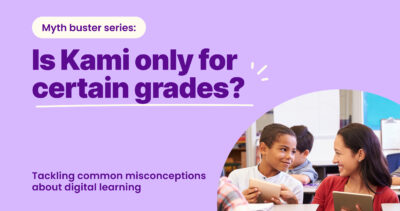Shirin Bradfield
By Marcus Stein
Every educator has their little tips and tricks, often passed down to them from wiser, more experienced teachers who’ve taken them under their wings. Personally, some of the most meaningful insights I’ve gained throughout the years have centered around student engagement. So, in the spirit of paying it forward, here are my five key strategies that revolutionized the way I approached teaching with a focus on keeping my students engaged.
Ask questions… about questions
Inquiry is the heartbeat of learning. When I started encouraging students to question the questions (what academics call metacognition), a new depth of understanding emerged. It’s about pushing them to think about the ‘why’ behind a question, the context, and its implications. This approach nurtures critical thinking and turns passive learners into active knowledge seekers.
Say “What if” often
The phrase “what if” is like a gateway to creative thinking. I found that by regularly posing ‘what if’ scenarios, my students engaged more deeply with the material. It allowed them to step beyond the confines of the curriculum and explore alternative perspectives or solutions. This simple concept not only enhances engagement but also fosters a culture of innovation and open-mindedness in the classroom.
Stay relevant
Linking lesson content to real-world scenarios is a game-changer for student engagement. When students see the relevance of what they’re learning to their lives or current events, it ignites an intrinsic motivation to learn. Staying relevant could mean integrating current news, technology, or even pop culture into your lessons. It’s about bridging the gap between the classroom and the world outside.
Praise… a lot
Recognition and encouragement are powerful motivators. I made it a point to praise effort, not just achievement. Celebrating small wins and acknowledging students’ hard work creates a positive learning atmosphere. It boosts their confidence and encourages them to take on new challenges. Remember, a simple “Great job!” can go a long way toward compelling students to want to learn and achieve more.
Be Authentic
Authenticity breeds connection. When I brought my true self to the classroom and shared my passion for the subject, it resonated with my students. They appreciate honesty and openness. This doesn’t mean you need to be an open book, but showing your human side — your interests, humor, and empathy — helps build trust and a stronger teacher-student relationship.
Engagement in the classroom is about more than just keeping students busy; it’s about inspiring a passion for learning and creating a vibrant, interactive educational environment. By incorporating these strategies, we can make our classrooms lively hubs of curiosity and growth.
You may also like

Unlocking understanding: Kami’s latest updates designed for every learner

The state of SPED and ELL technology in 2025

